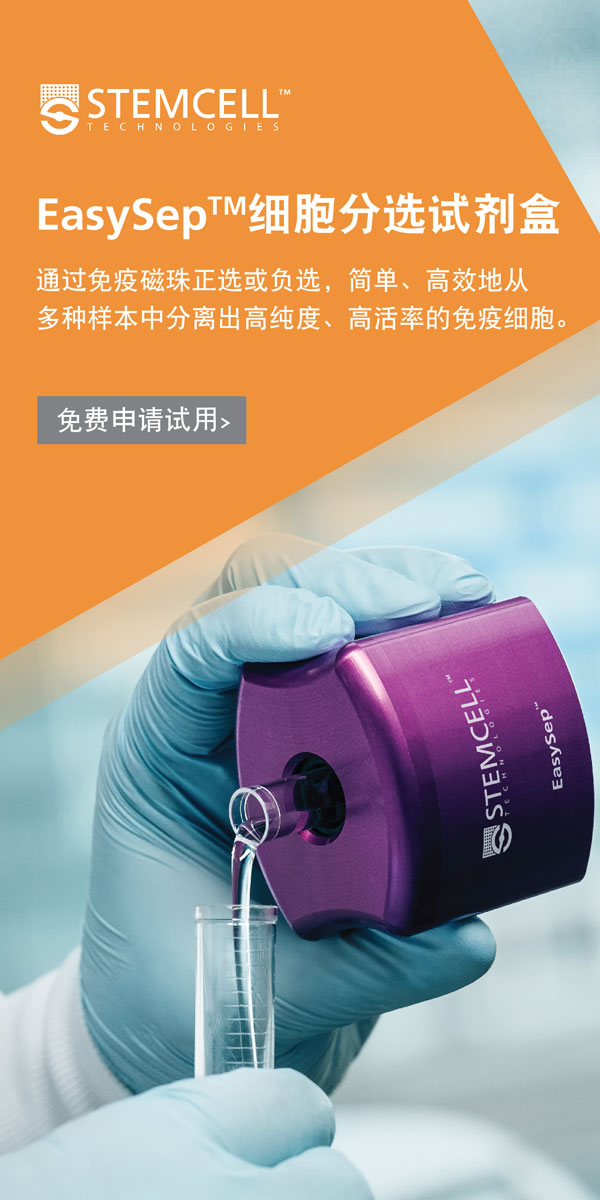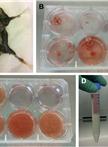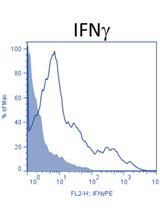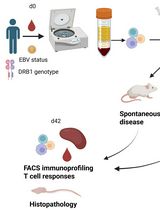- EN - English
- CN - 中文
Determining Leukocyte Origins Using Parabiosis in the PyMT Breast Tumor Model
采用联体模型在PyMT乳腺肿瘤模型中测定白血球起源
发布: 2015年08月20日第5卷第16期 DOI: 10.21769/BioProtoc.1567 浏览次数: 10517
评审: Mario CioceAnonymous reviewer(s)
Abstract
Tumors develop in a complex microenvironment alongside numerous cell types that impact their survival. Immune cells make up a large proportion of these accessory cells and many are known to promote tumor progression. Macrophages, in particular, are associated with poor patient prognosis and are therefore potential candidates for therapeutic targeting in cancer. However, to develop successful strategies to target macrophages, it is important to clarify whether these cells are derived from blood-borne precursors or a tissue-resident population. Parabiosis, or the surgical connection of two mice resulting in a shared blood circulation, allows the distinction between these two cellular sources. Here, we describe the use of parabiosis to define cell ontogeny in a mouse model of breast cancer.
Keywords: Tumor-associated macrophages (肿瘤相关巨噬细胞)Materials and Reagents
- Mice: Female age- and weight-matched congenically-marked MMTV-PyMT mice [see Franklin et al. (2014) for specific strain information]
- Injectable anesthesia (ketamine/xylazine cocktail: 150 mg/kg/15 mg/kg)
- Antiseptic solution (Betadine)
- 70% ethanol
- Ophthalmic ointment (Paralube)
- Analgesic (Buprenorphine, 0.1 mg/kg)
- Non-wetting sterile water (HydroGel)
- Sterile saline solution (0.9% NaCl)
- 1x PBS
- 10x PBS
- Bovine serum albumin (Sigma-Aldrich, catalog number: A2153 )
- Sodium azide (Sigma-Aldrich, catalog number: S2002 )
- Collagenase Type III (Worthington Biochemicals, catalog number: LS004182 )
- Percoll (Sigma-Aldrich, catalog number: P1644 )
- HBSS + calcium chloride + magnesium chloride (Life Technologies, Gibco®, catalog number: 14025 )
- Deoxyribonuclease I from bovine pancreas (Sigma-Aldrich, catalog number: DN25 )
- CD45.1 APC-eFluor® 780 (eBioscience, catalog number: 47-0453-82 )
- CD45.2 PerCP-Cyanine5.5 (eBioscience, catalog number: 45-0454-82 )
- MHC Class II (I-A/I-E) FITC (eBioscience, catalog number: 11-5321-82 )
- CD11b Pacific Blue™ (Life Technologies, InvitrogenTM, catalog number: RM2828 )
- Ly-6C APC (BD Pharmingen, catalog number: 560595 )
- Ly-6G PE (BD Pharmingen, catalog number: 551461 )
- Fc block (2.4G2), (BD Pharmingen, catalog number: 553142 )
- RPMI 1640 (Life Technologies, Gibco®, catalog number: 11875-093 )
- Digestion buffer (see Recipes)
- 100% Percoll (see Recipes)
- 44% Percoll (see Recipes)
- 66% Percoll (see Recipes)
- FACS buffer (see Recipes)
Equipment
- Non-absorbable black nylon suture (4-0, 13mm, 3/8 circle) (Ethicon, catalog number: 1854G )
- Wound clip applier, wound clip remover, wound clips (Autoclip, 9 mm) (Braintree Scientific, catalog number: ACS KIT )
- Cotton-tipped applicators (3 inch, wood shaft) (Fisherbrand, catalog number: 23-400-105 )
- Sterile gauze (Fisherbrand, catalog number: 22-028-558 )
- Needle holder with locking mechanism (Fine Science Tools)
- Scissors (Fine Science Tools)
- Curved forceps (2 pairs) (Fine Science Tools)
- Razor blades
- Slides (Corning Incorporated, catalog number: 2948-75X25 )
- Heating lamp
- Heating pads
- Electrical shaver
- Surgical drapes/sterile pads (Fisherbrand)
- 6 well non-tissue culture treated plates (Falcon®)
- 70 micron cell strainers (Falcon®, catalog number: 352350 )
- 50 ml conical tubes (Falcon®)
- 15 ml conical tubes (Falcon®)
- 3 ml syringe (BD Bioscience)
- U-bottom 96 well plates (Falcon®)
- Desktop centrifuge (Sorvall)
- 37 °C water bath
- Flow cytometer (BD LSR II or similar)
Procedure
文章信息
版权信息
© 2015 The Authors; exclusive licensee Bio-protocol LLC.
如何引用
Franklin, R. A. and Li, M. O. (2015). Determining Leukocyte Origins Using Parabiosis in the PyMT Breast Tumor Model. Bio-protocol 5(16): e1567. DOI: 10.21769/BioProtoc.1567.
分类
癌症生物学 > 肿瘤免疫学 > 动物模型 > 细胞分离和培养
免疫学 > 动物模型 > 小鼠
您对这篇实验方法有问题吗?
在此处发布您的问题,我们将邀请本文作者来回答。同时,我们会将您的问题发布到Bio-protocol Exchange,以便寻求社区成员的帮助。
Share
Bluesky
X
Copy link














